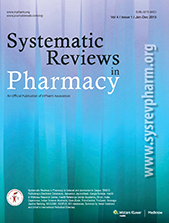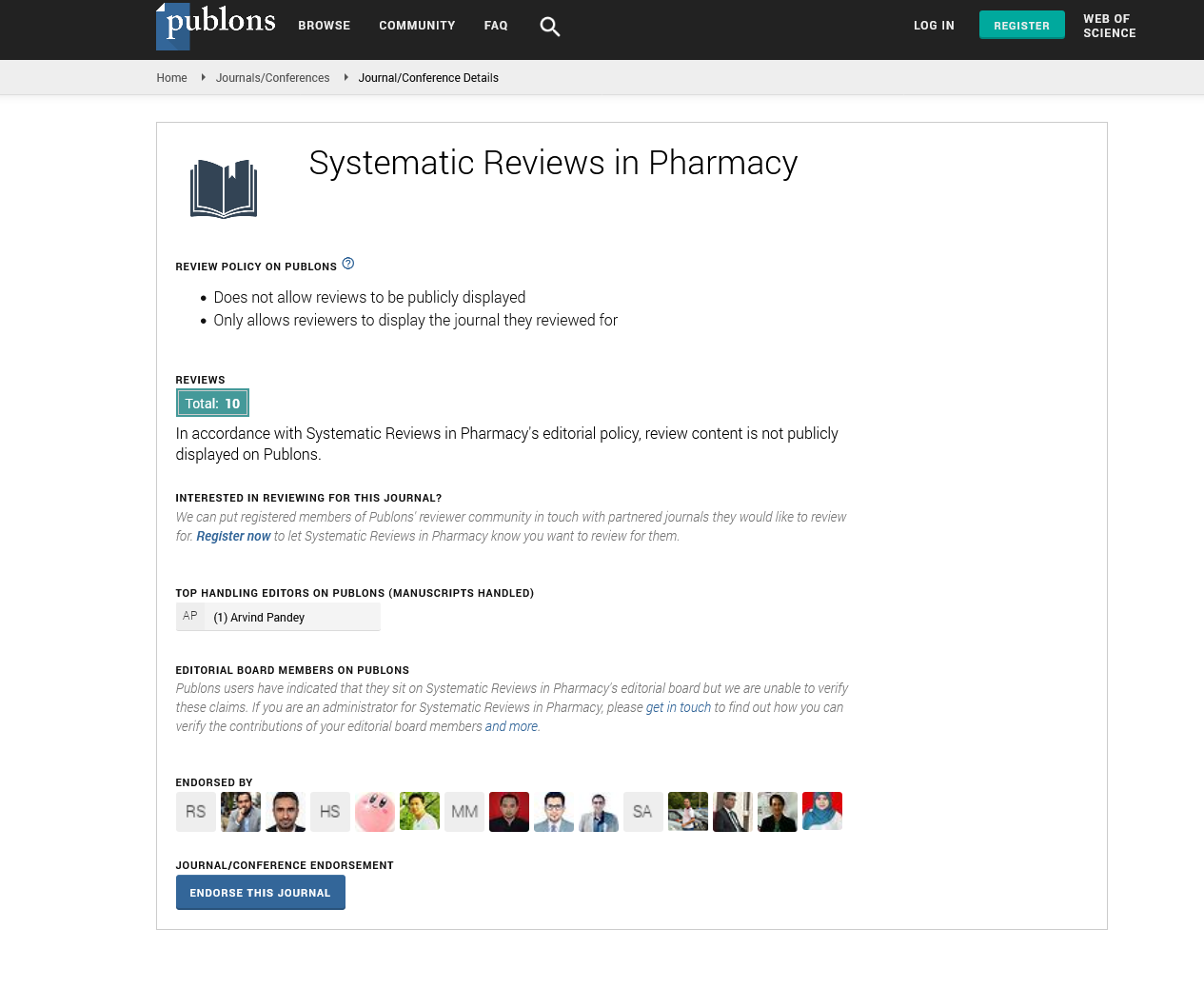404 Page not found!!
We weren't able to find this page. Here are some other open options you might take up!!Systematic Reviews in Pharmacy (Sys Rev Pharm.), (SRP) (Print ISSN: 0975-8453, E-ISSN: 0976-2779) is a monthly Peer-review open-access Journal, serves the need of different scientists and others involved in Pharmaceutical research and development. Each issue covers review articles on Drug discovery topics and also publishes full-length reviews related to different subjects in pharmacy that are of broad readership interest to users in industry, academia, and government. The first issue was published online in December 2009.
All contributions to Sys. Rev Pharm are reviewed by the peer review process and copyediting process with the understanding that they have not been published previously and are not under consideration for publication elsewhere. Author/s is/are responsible for all statements made in their work and obtaining necessary permission to republish any previously published illustrations and/or other relevant materials. The journal’s full text is available online at www.sysrevpharm.org. The journal allows free access (Open Access) to its contents and permits authors to self-archive the final accepted version of the articles on any OAI-compliant institutional / subject-based repository.
Scope of the journal
Kaliteli bir casino deneyimi için vavada platformuna giriş yapın. Modern arayüz, güvenli ödeme yöntemleri ve kullanıcı dostu oyunlar ile eşsiz bir deneyim sizi bekliyor. Bağlantıya tıklayın ve avantajları keşfedin!
The journal covers and publishes all articles related to Pharmacy subjects including some of the allied subjects. Articles with timely interest and newer research concepts will be given more preference.
This journal also publishes manuscripts related to pharmaceutics, biopharmaceutics, pharmaceutical chemistry, pharmacognosy, pharmacology, pharmaceutical analysis, pharmacy practice, clinical, Biomedical Research, and Biomedical sciences. Other topics include all aspects of plant and animal nutrition, medical law, law and education, and the application of new analytical and study methods (including new analytical and bio-analytical techniques).






